3D technology has been around for a long time. However, the craze for it is increasing daily with the launch of movies and games in 3D. Standard images look flat and dull but changing them into 3D makes them look more magical and creates more depth in those soft and flat images. Both human eyes have different perceptions of what they look at, so in 3D images, two images are shown simultaneously to the viewer to create a real-life experience.
Everyone is aware of what 3D is. If you don't worry, tag along, and at the end of this article, you will have a clear idea of what 3D is and what are active 3D glasses. Looking at 3D images or videos with the naked eye is impossible without glasses; the best lens to view 3D video is active shutter 3D glasses. In some theatres, 3D movies are shown using active shutter 3D systems, which can also be used to display 3D images on CRT, plasma, LCD, projectors, and other video displays.
This article focuses on different types of 3D glasses and the difference between active and passive 3D glasses. At last, we have created a hand-picked list of the top 5 3D glasses to choose from so that your hunt for the best 3D glasses can end and you can enjoy the complete experience at home.
In this article
Different Types of 3D Glasses
With advancements in 3D technology over time, the public may now experience games and movies in new and improved ways. 3D has been around since 1839 but gained public attention when Director James Cameroon 2009 released the movie Avatar. It is now a crucial part of the industry, and new technologies are being introduced, but viewing these images and video created is impossible with the naked eye.
For viewing purposes, 3D glasses are used because when the 3D image is sent separately to both eyes, if we view the images without the glasses, the image will be decoded by the eyes, but the result will be distorted.
Looking at these images in the mirrors will give your a crisp experience and make it look like the idea is popping out. The glasses' lenses have different functions, as mentioned above, and the 3D screen sends images to both. The left and right eye which is then decoded by the mirrors and tricks the brain into viewing the images into a single image.
The 3D glasses depend on which type of 3D technology you are using. Some general and widely used 3D glasses are shared below so you can know which 3D glasses you need to buy based on the technology or your preference.
- Anaglyph 3D glasses
- Polarized 3D glasses
- Active Shutter 3D glasses
Anaglyph 3D Glasses: These are the glasses that are commonly used in theatres, also known as red and cyan 3D glasses. The image shown on the screen is two colors, red and cyan; the red in the glasses will filter out the red in the image while the other filters out the blue in the picture.
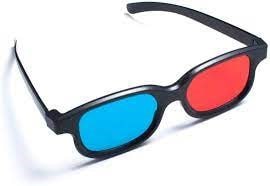
Polarized 3D Glasses: The technology is used to view the polarised screen's projected images. These types of glasses work similarly to the working of anaglyph 3D glasses. These are yellowish rather than red and cyan.
Along with the polarization on the glasses, the projected image is two images that are layered on the same screen using an orthogonal polarising filter. Each eye can then view a different image on the screen thanks to the glasses' identical type of filter.
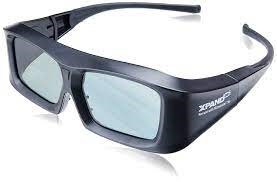
Active Shutter 3D Glasses: The most advanced 3D glasses on the market are believed to be shutter glasses. Unlike the other two types of 3D glasses, shutter glasses use active 3D technology. They don't use filtered photos or colors to create the illusion of three dimensions. Instead, LCD screen technology allows shutter glasses to function, alternately darkening the left and right lenses.
You won't notice the lens darkening because it happens so quickly unless you're paying close attention. Shutter glasses cost more than traditional 3D glasses and are typically powered by batteries or a USB. Their pricing substantially impacts the image quality of these glasses
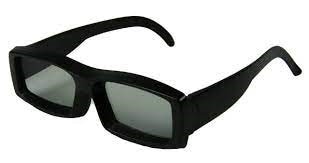
Wondershare Ani3D - Convert from 2D to 3D videos, from good to great.
- Lets you create 3D videos in 5 minutes.
- The processing time of a single video is 1:1 to the video length.
- Convert any video you like to 3D and watch it on your VR device.
- Simple and convenient operation, completed within 3 steps.
- Support batch operation.
Active 3D Glasses vs. Passive 3D Glasses
Ever heard the word active 3D glasses or passive 3D glasses but wondered what are those? There are two major types of 3D technologies used to view 3D movies. One is a bit old, and the other is the most recent and efficient technology used in the 3D world. This part of the article will clear your doubts about active and passive 3D glasses.
Active 3D glasses are the most recent and advanced 3D viewing technology. These are battery-operated glasses with active shutters meaning that the lens shutter of the glasses will rapidly open and close. When a lens shutter opens up to let the image be visible to your eye, the other side of the glasses will be completed to block the vision from the other eye. The video should be presented in 120 frames per second to be viewed in active shutter 3D glasses.
Passive 3D glasses are the basic and most frequently used 3D glasses. They have polarized lenses for viewing 3D videos. They are the ones that are used in theatres and amusement park rides. Passive 3D works when each image is simultaneously presented to both eyes after being polarised to match one passive eyeglass lens.
A sharp difference between both technologies is given below in table form.
| Active 3D Glasses | Passive 3D Glasses |
| Require battery to operate | It does not require batter |
| Expensive | Affordable |
| Works on shutter opening and closing | Both the lens are polarized |
| Require a specific tv that presents the image in 120 frames per second. | No Specific tv is required. |
Top 5 3D Glasses
Fan of 3D technology but haven't bought one? Looking for the most suitable active 3D glasses to start your 3D journey, but you are confused about which one you should buy or don't even know where to start? We are here to help you through your search for 3D glasses.
Remember when you first went to the theatre, and they gave you those weird cardboard glasses to view 3D movies? Since then, 3D technology has come a long way with new and more trendy glasses to look through.
We have devised a list of the top 5 3D glasses with active shutter technology. These are some of the best glasses, to begin with. These hand-picked Active 3D glasses will make your 3D viewing experience more enjoyable and entertaining.
1. 3DHeaven Ultra-Clear HD
Weight: 1 pound
Price: 35$
Automatic Power-Off
Thick and Durable Frame
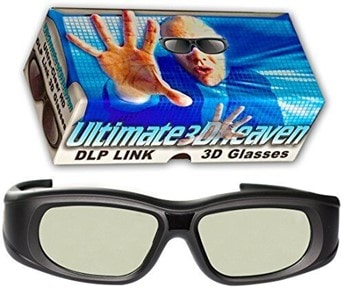
2. Boblov Shutter
Weight: 1 pound
Price: 18$
Can fit over prescription glasses
180 Day Stand-by
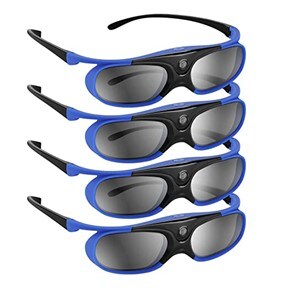
3. Sintron ST07-BT
Weight: 1 pound
Price: 15$
Sold in packs of 2
The battery can last for 60 hours
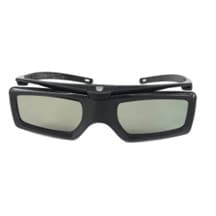
4. XGIMI Active Shutter 3D Glasses
Weight: 5.6 ounces
Price: 29€
178-degree wide-angle view
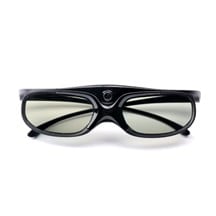
5. G05 3D Glasses
Weight: 46 grams
Price: 35$
Super Soft, Durable, and Foldable bracket
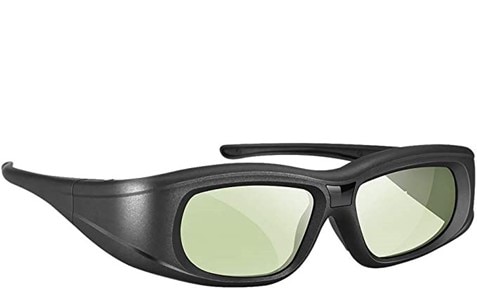
FAQ's
1. What's the best software to transform 2d video to 3D?
The best software for converteing 2D images and videos into 3D is Wondershares’s Ani3D. The application is very easy to use, with a simple and easy-to-understand interface. The application is best if you want to give your images and videos a creative touch.
2. Do active 3D glasses work with any TV?
Active 3D glasses are the most recent and advanced of 3D technology, and many wonders if they can use any Active 3D glasses with any screen. That is not possible because the images projected to the glasses are of a certain frame rate, and they require a TV screen that projects images to them at that specific frame rate.
3. Can I use any active 3D glasses with my projector?
If you have active 3D glasses, then you should know how they work. These glasses usually require projectors to present images to the lenses at a minimum of 120 frames per minute. That's why you need a projector that can sync with your glasses so that you can easily view 3D movies without any issues.
Summary
Since you have come this far, let us summarise the article. A brief introduction to active 3D technology was shared so that any confusion regarding active 3D can be made clear. We have also listed the top 5 3D glasses with dynamic shutter technology to help you hunt for the best 3D glasses.

